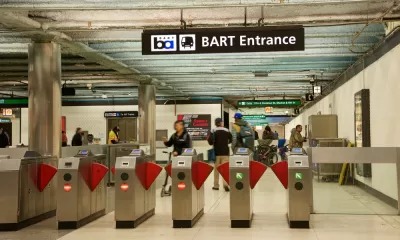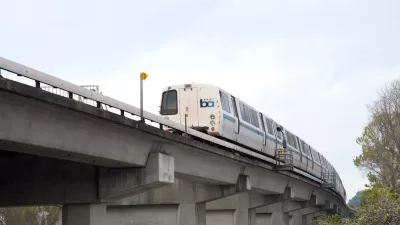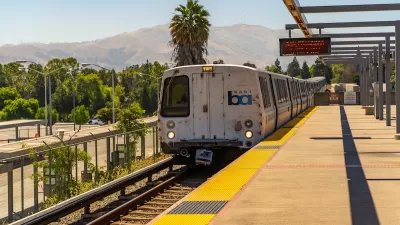Bay Area transit agencies employ rigorous protocols to ensure they’re prepared for the next major earthquake.

Californians know they should always be ready for the next earthquake—and that includes the state’s transit systems. In the San Francisco Bay Area, when the Loma Prieta earthquake struck in 1989, the Bay Area Rapid Transit (BART) system persisted with minimal disruptions. Ricardo Cano of the San Francisco Chronicle explains how the system prepares for major earthquakes.
“BART’s earthquake early warning detection system alerts the system to pending quakes and automatically signals trains to slow down at higher seismic intensities,” Cano writes. “Following an earthquake, [BART spokesperson James Allison] said, BART trains will stop (except for trains in the Transbay Tube and Berkeley hills tunnel) until it is determined it is safe to move the train to the nearest station, where riders will get off. Trains in the tube or tunnel move to the nearest station and then hold.” Staff are also trained and retrained regularly to respond to various levels of intensity.
San Francisco’s other major transit agency, Muni, and the ferry operator, San Francisco Bay Ferry, have similar processes in place. “Like BART, Muni personnel would assess damages and inspect the system’s infrastructure to determine how soon Muni service could continue. Motor buses would replace electric trolley buses and streetcars if an earthquake damaged the system’s power lines.”
FULL STORY: How the Bay Area’s transit services prepare for the next big earthquake

Planetizen Federal Action Tracker
A weekly monitor of how Trump’s orders and actions are impacting planners and planning in America.

Maui's Vacation Rental Debate Turns Ugly
Verbal attacks, misinformation campaigns and fistfights plague a high-stakes debate to convert thousands of vacation rentals into long-term housing.

San Francisco Suspends Traffic Calming Amidst Record Deaths
Citing “a challenging fiscal landscape,” the city will cease the program on the heels of 42 traffic deaths, including 24 pedestrians.

Amtrak Rolls Out New Orleans to Alabama “Mardi Gras” Train
The new service will operate morning and evening departures between Mobile and New Orleans.

The Subversive Car-Free Guide to Trump's Great American Road Trip
Car-free ways to access Chicagoland’s best tourist attractions.

San Antonio and Austin are Fusing Into one Massive Megaregion
The region spanning the two central Texas cities is growing fast, posing challenges for local infrastructure and water supplies.
Urban Design for Planners 1: Software Tools
This six-course series explores essential urban design concepts using open source software and equips planners with the tools they need to participate fully in the urban design process.
Planning for Universal Design
Learn the tools for implementing Universal Design in planning regulations.
Heyer Gruel & Associates PA
JM Goldson LLC
Custer County Colorado
City of Camden Redevelopment Agency
City of Astoria
Transportation Research & Education Center (TREC) at Portland State University
Jefferson Parish Government
Camden Redevelopment Agency
City of Claremont





























